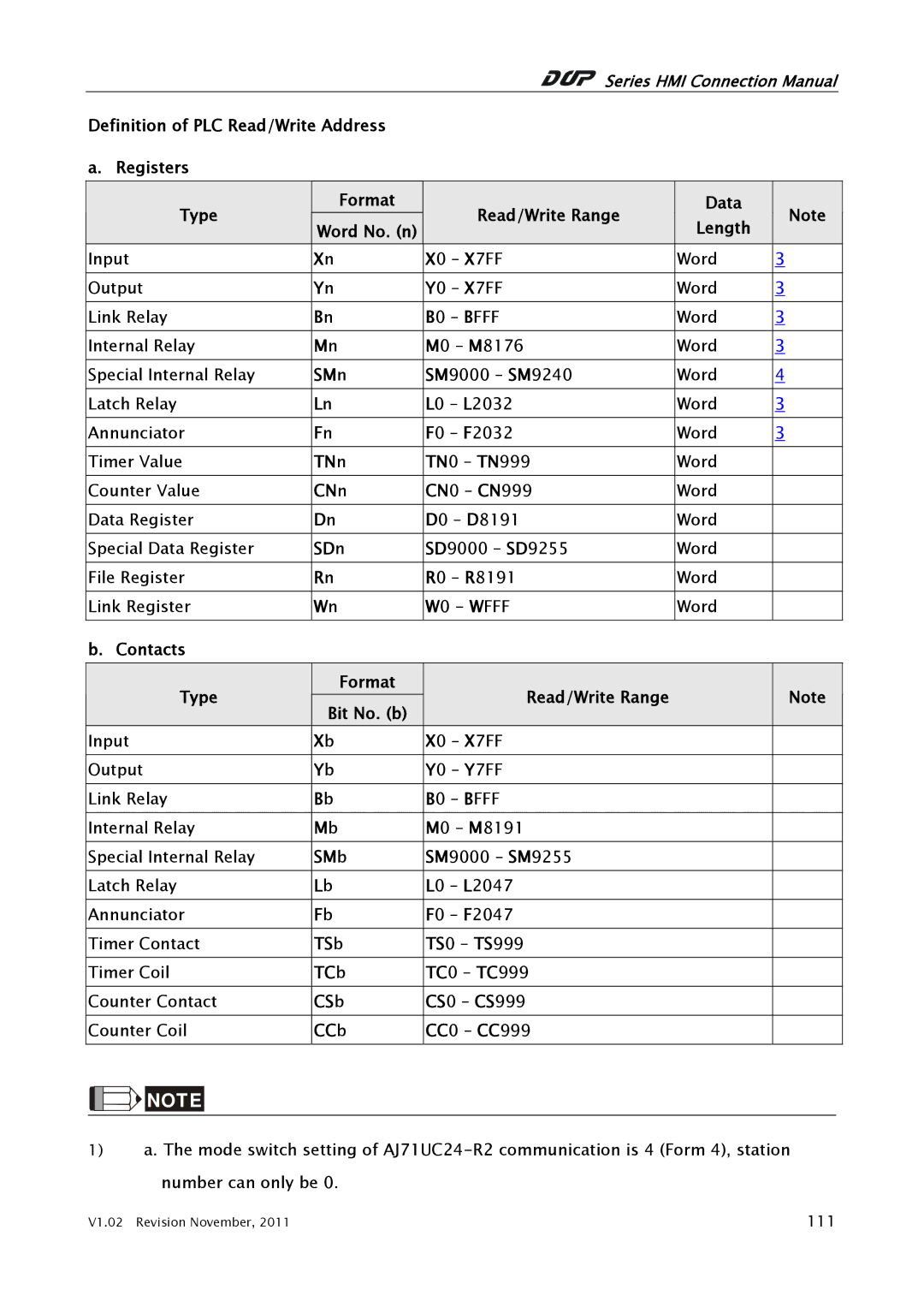J71UC24 specifications
Mitsubishi Electronics has been a pioneer in the field of automation and control systems, and one of their notable products is the J71UC24 module. This compact yet highly efficient communication processor is designed to enhance the functionality of Mitsubishi's PLC (Programmable Logic Controller) systems, specifically the MELSEC series.The J71UC24 is primarily an Ethernet communication module that allows for seamless connectivity between PLCs and various other devices within industrial environments. With its ability to support high-speed communication, the J71UC24 significantly reduces the response time in automated systems, making it an ideal choice for real-time processing applications.
One of the main features of the J71UC24 is its compatibility with the Ethernet/IP protocol, which facilitates communication between multiple devices on a network. This ensures a standardized communication method, allowing different types of devices—such as sensors, actuators, and industrial computers—to effectively interact with one another. Its support for Modbus TCP further broadens its applicability, making it compatible with a wide range of automation equipment.
The J71UC24 is equipped with advanced functionalities, including built-in diagnostic tools that assist in troubleshooting and maintenance. These tools provide valuable insights into system performance and connectivity status, helping technicians quickly identify issues and minimize downtime. Additionally, the module supports multiple simultaneous connections, which enhances its scalability for larger systems.
From a technological perspective, the J71UC24 demonstrates Mitsubishi’s commitment to innovation. The module is designed with user-friendliness in mind, featuring easy integration into existing systems. Its compact form factor allows for space-saving installations, crucial in environments where real estate is limited.
Moreover, the J71UC24 is designed with durability and reliability in mind, featuring robust construction that withstands the harsh conditions often found in industrial settings. This ensures longevity and consistent performance, even in environments with high electromagnetic interference and temperature fluctuations.
In conclusion, the Mitsubishi J71UC24 communication processor stands out due to its comprehensive features, including high-speed Ethernet communication, compatibility with multiple protocols, built-in diagnostics, and enhanced scalability. Its user-centric design and resilience make it an invaluable component for modern automation systems, catering to the evolving demands of the industry.

